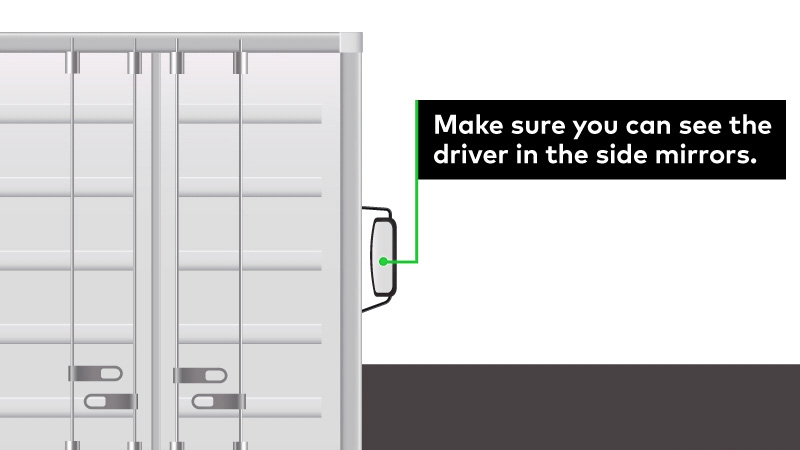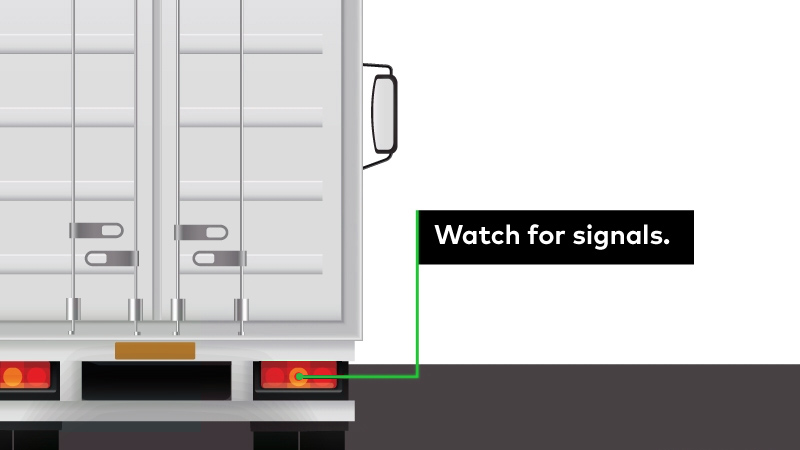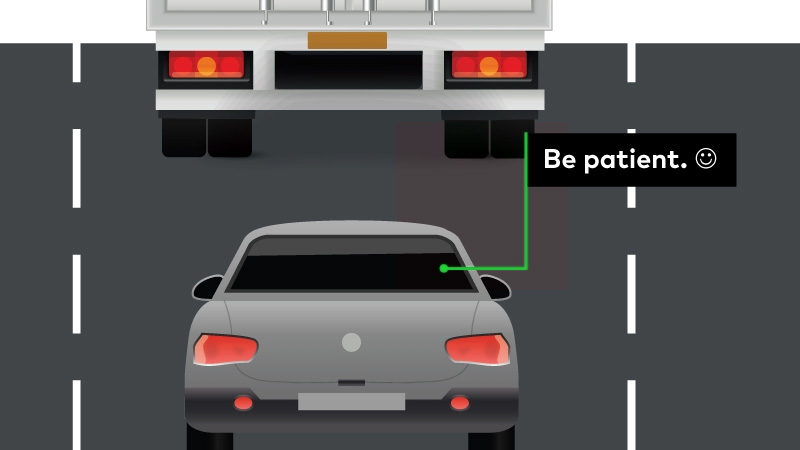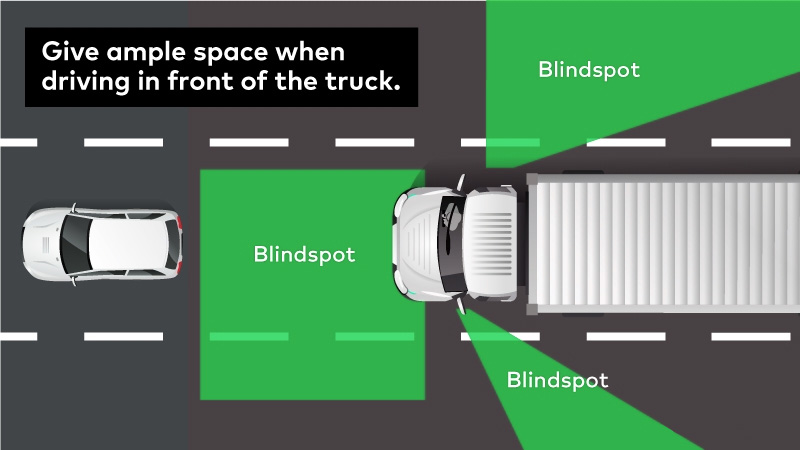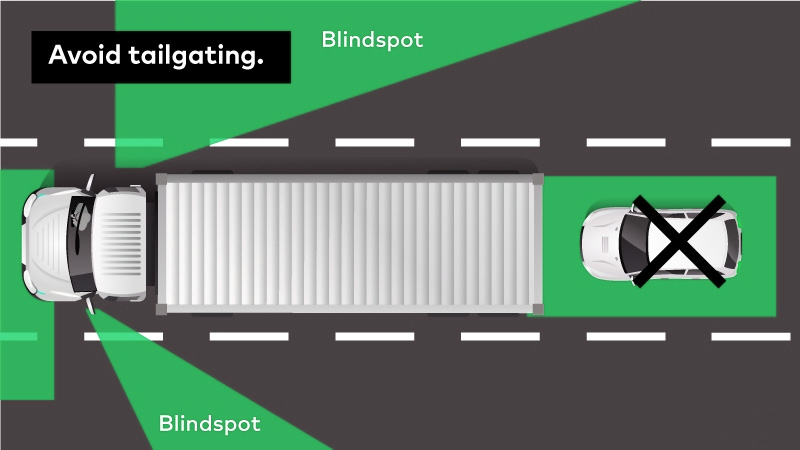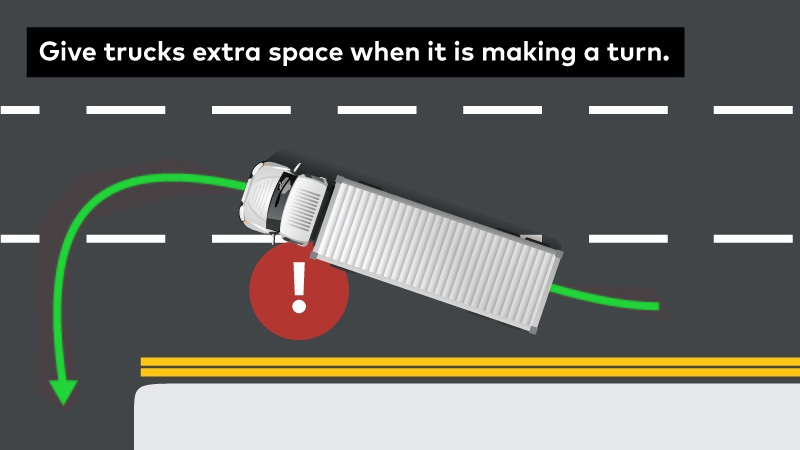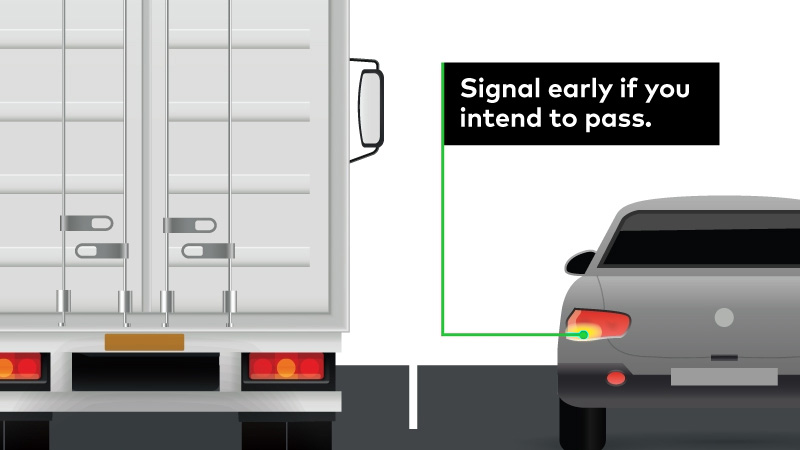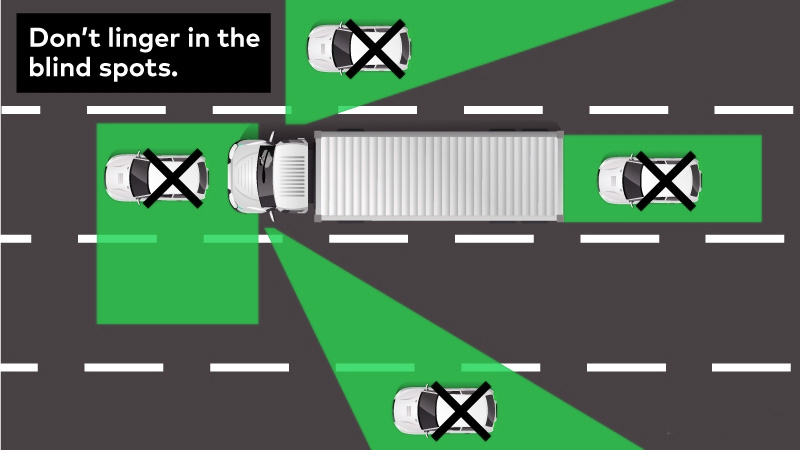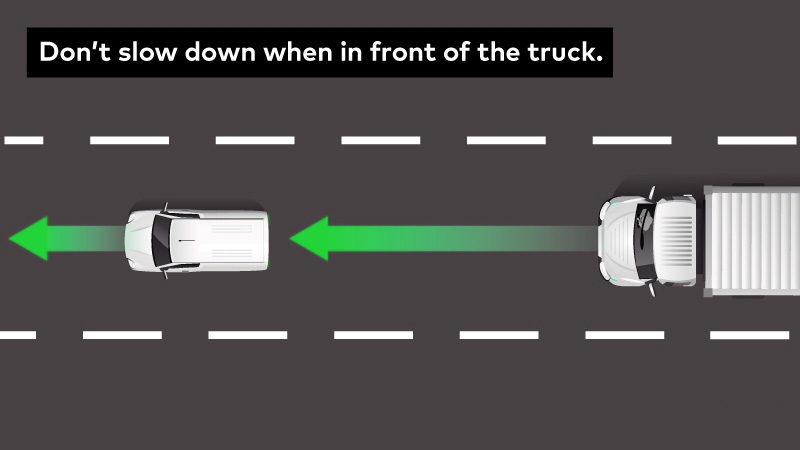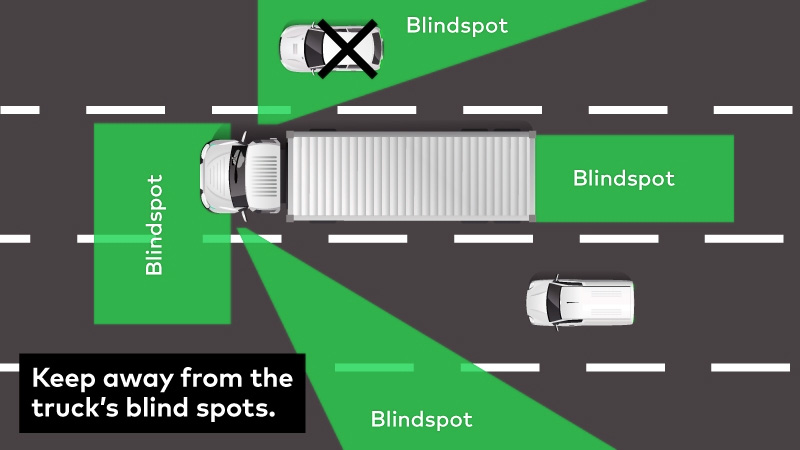
1. Keep away from the sides of the truck.
A truck’s increased size means bigger blind spots, so it is crucial to be aware of where these blind spots are. Sections of the lanes on either side of a truck, particularly on the sides, are not visible to the truck driver and therefore extremely dangerous for other cars to drive through.
- If you must drive through these areas to pass a truck, use caution and pass as quickly as safety allows. Signal early and let the driver see you before you pass.
